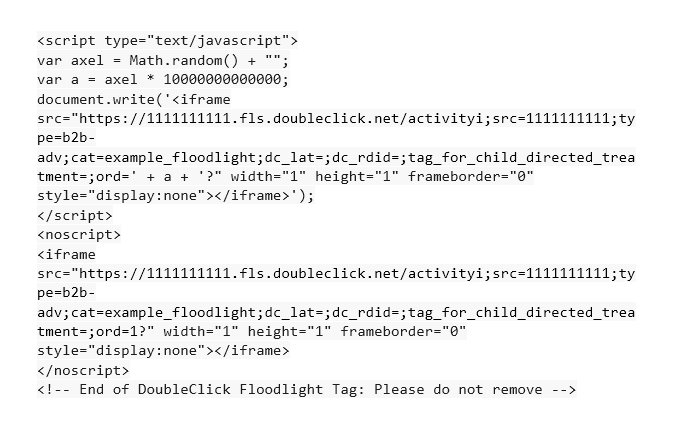Today, tags are an essential part of the digital marketer's toolkit enabling us to track activity across a website and collect the data to gain a better understanding of how our campaigns are running or our website is performing. But what are marketing tags exactly and how are they used in digital marketing?
What are Marketing Tags?
A marketing or website tag is a segment of code, written in Javascript, that is placed on a brand’s site in order to track user actions and collect data.
When a visitor to the website undertakes a specific action that is configured to trigger the tag, that tag is said to have ‘fired’ - in other words, it collects data about that activity and sends it to, most commonly, an analytics or marketing tool.
There are different types of tags depending on the function they serve. For instance, Pageview Tags monitor visits to different pages on your site and Conversion Tags track every time a sale is made or a lead form is filled out (or whatever action you designate as a conversion).
Marketing tags also go by a number of different names such as website tags, script tags, tracking tags, 3rd party tracking, floodlights, spotlights, or activities - largely depending on the platform that has produced the tag.
(Note: Code-based tags should be distinguished from image tags which, although they play a similar role, are small images, the size of a single pixel, instead of a segment of code.)

What are marketing tags used for?
In the simplest of terms, tags in digital marketing are used to send information to an analytics or marketing tool about the different actions users take on their website - for example, form completions, page views, conversions - any number of events or actions you might want to track. Anytime you are looking at this sort of data, this is because of a tag.
In particular, tags enable marketers to:
1. Measure performance and track KPIs
Because tags are delivering information about user activity on your website, they enable marketers to better understand the performance of their campaigns and whether they are hitting particular KPIs.
2. Compare different channels
Tags enable marketers to compare and measure the effectiveness of different channels, publishers, or digital campaign partners so they can understand who is driving the most conversions within your ad campaigns.
3. Analyze Site effectiveness
Is your site easy to use? What is the user journey? Tags help marketers answer these questions allowing them to pay attention to metrics such as bounce rate, visit duration, etc. They can also enable heat mapping to help marketing teams understand how users are navigating their site.
4. Conduct campaign ad retargeting
Tag data can be used to show users ads in relation to pages they have visited (warning: see the section on Cookie Deprecation below).
5. Better understand audience profiles
Tags can collect attributes and characteristics of users for superior audience segmentation (again, warning: see the section on Cookie Deprecation below).
6. Improve ROI
Ultimately, by doing all of the above and optimizing accordingly, marketers can achieve a better ROI.
How are tags affected by Cookie Deprecation?
Third-party cookies, cookies that are created by a domain other than the domain or website a user is visiting, operate using tags. With GDPR and other privacy laws, the use of third-party cookies is being phased out. What this means is that tags will no longer be able to provide third-party data, largely ruling out activities such as campaign ad retargeting as well as reducing the amount of audience information that can be collected for building audience segments.
What is a Tag Management Solution?
Tags are most commonly deployed using a Tag Management Solution or System (TMS) for example, Google Tag Manager or Adobe Launch.
A TMS is a platform that enables marketers to, you guessed it, manage their tags more effectively. For example, a TMS lets marketers deploy multiple tags via a single tag called a ‘container’ tag. Marketing teams can define specific rules from within the TMS. The container tag will fire other tags based on those rules.
Aside from being a much simpler and more organized way of managing your tags, a TMS can often mean that web pages load more quickly by controlling the way different tags load.
What is the typical tag deployment process?
- Generate tag
Create a tracking tag in the platform of origin (data source) where you wish to track data.- Deploy Tag
Option A: Directly deploy the tag on the relevant page.
Option B: Use a tag management solution (TMS) to deploy.- Check tag is firing
Use packet sniffing tools like Telerik Fiddler or Chrome developer tools, or use a tool directly from within your TMS to confirm the tag is firing.- Tag is now live
Data will now be sent to the platform of origin (data source).
Related Articles
-
Tag management best practices for marketers
-
What is a Data Mesh (and why should marketers care)?
-
What is ETL (and how does it help with marketing analytics)?














